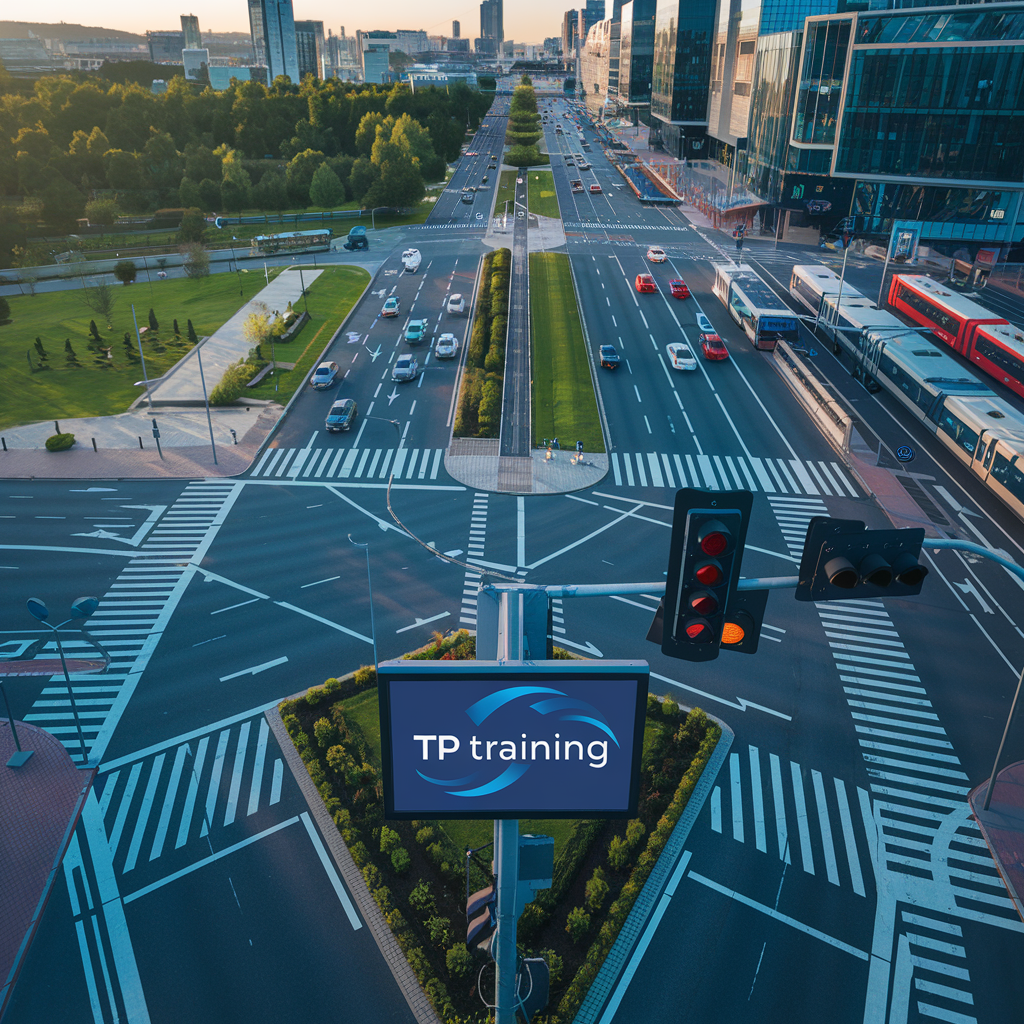
The Crucial Role of Traffic Management in Urban Development: Ensuring Safe and Efficient City Life
In today’s rapidly expanding cities, traffic management plays a crucial role in maintaining not only the flow of vehicles but also the safety and well-being of urban populations. As cities grow, so do the challenges of managing complex road networks, high vehicle volumes, and the integration of pedestrian safety measures and public transportation. Urban planners and traffic management professionals must focus on creating systems that are safe, efficient, and sustainable.
But what exactly makes traffic management so vital? And how can it shape the future of our cities? Let’s dive into the importance of traffic management in urban areas, exploring the challenges, solutions, and innovations shaping the way we move.
The Challenges of Traffic Management in Urban Areas
Managing traffic in densely populated cities is no small feat. Urban areas face unique traffic challenges, such as:
- High Population Density: With more people comes more vehicles, leading to congestion and increased demand for efficient road systems.
- Complex Road Networks: Intersections, roundabouts, and multiple lanes add layers of complexity to traffic control.
- Pedestrian Safety: Ensuring pedestrian-friendly infrastructure, like crosswalks and traffic lights, without interrupting vehicle flow.
- Public Transport Integration: Balancing the needs of buses, trams, and trains with regular road users.
These challenges highlight the need for a well-thought-out traffic management plan to maintain order and safety on city roads. A failure to do so can lead to disastrous consequences, such as increased road accidents, environmental pollution, and slowed economic growth.
At TP Training, we offer comprehensive Traffic Controller and Traffic Management Implementer Courses to prepare professionals to tackle these challenges head-on, ensuring the smooth and safe management of urban traffic systems.
The Benefits of Effective Traffic Management
When traffic management is done right, the benefits for urban life are profound:
- Improved Road Safety: By regulating speed, traffic lights, and signs, accidents can be minimized, reducing injuries and fatalities.
- Reduced Congestion: Smart systems help balance traffic flows, reducing bottlenecks and travel times for commuters.
- Environmental Benefits: Fewer vehicles idling in traffic means lower carbon emissions, contributing to a cleaner environment.
- Economic Advantages: Efficient traffic systems improve access to businesses, transportation of goods, and overall economic activity.
For anyone working in urban development, understanding these benefits is key to creating liveable, functional cities. Through our Traffic Management Courses at TP Training, we provide the essential tools for professionals to contribute to safer and more efficient urban roads.
Key Components of a Successful Urban Traffic Management Plan
To achieve these benefits, several components must be integrated into any urban traffic management strategy:
- Traffic Control Systems: The use of traffic signals, signage, and speed management to regulate the flow of vehicles. Technologies like smart traffic lights, which adjust based on real-time data, are transforming how we manage busy intersections.
- Public Transport Integration: Encouraging the use of buses, trains, and trams not only reduces the number of private cars on the road but also enhances mobility options for citizens. Cities like Sydney are increasingly relying on multimodal transport systems to balance traffic across all sectors.
- Pedestrian and Cyclist Safety: Crosswalks, overpasses, and designated bike lanes are crucial to ensuring safety while promoting greener transportation alternatives. For professionals interested in learning more about creating safe pedestrian zones, our Traffic Management Implementer Yellow Card Course covers the fundamentals.
- Parking and Urban Space Optimization: Proper parking management, such as paid parking zones or automated parking systems, helps prevent unnecessary road occupation and reduces traffic searching for spaces.
The Role of Technology in Modern Traffic Management
The future of traffic management lies in smart cities, where technology plays an integral part in creating seamless urban mobility. Key innovations include:
- Smart Traffic Lights: These systems use real-time data to adjust signal timings based on traffic flow, minimizing congestion and improving efficiency.
- Real-Time Traffic Data: Apps like Google Maps and Waze allow drivers to avoid congested routes, while city planners can use this data to make informed decisions about road improvements.
- Autonomous Vehicles: Though still in the early stages, self-driving cars are expected to revolutionize urban traffic by reducing human error and optimizing road space.
- AI and Big Data: Predictive algorithms powered by AI can analyze traffic patterns and recommend adjustments to improve traffic flow, ensuring the system becomes more efficient over time.
By integrating these technologies into urban planning, cities can create smarter, more sustainable traffic systems. To stay ahead in this rapidly changing field, traffic management professionals must continually upgrade their skills and knowledge. TP Training offers courses that dive deep into these innovations, helping you stay at the forefront of traffic management developments.
Case Studies: Successful Urban Traffic Management Systems
Here are some examples of cities leading the way in innovative traffic management:
- Singapore: Known for its efficient public transport and advanced traffic control systems, Singapore is a model for how urban traffic should be managed. Its use of electronic road pricing (ERP) helps reduce congestion during peak hours.
- London: The introduction of a congestion charge has successfully reduced traffic in the city center, encouraging more people to use public transport and cycle lanes.
- Sydney: In Sydney, ongoing investments in traffic infrastructure, including smart traffic lights and improved public transport, are designed to manage growing urban sprawl and population density.
Conclusion: Shaping the Future of Urban Traffic Management
Urban traffic management is key to creating cities that are not only liveable but also sustainable and economically vibrant. With new technologies and innovations emerging, the future of traffic management looks promising. However, the complexity of urban systems demands that professionals are well-trained and equipped to meet these challenges.
At TP Training, we provide industry-recognized training programs that ensure you have the skills and knowledge necessary to make an impact in urban traffic management. Our Traffic Management Courses are designed for both newcomers and experienced professionals looking to upgrade their expertise.
If you’re ready to take the next step in your traffic management career, explore our range of courses and see how you can be part of shaping the cities of the future.



